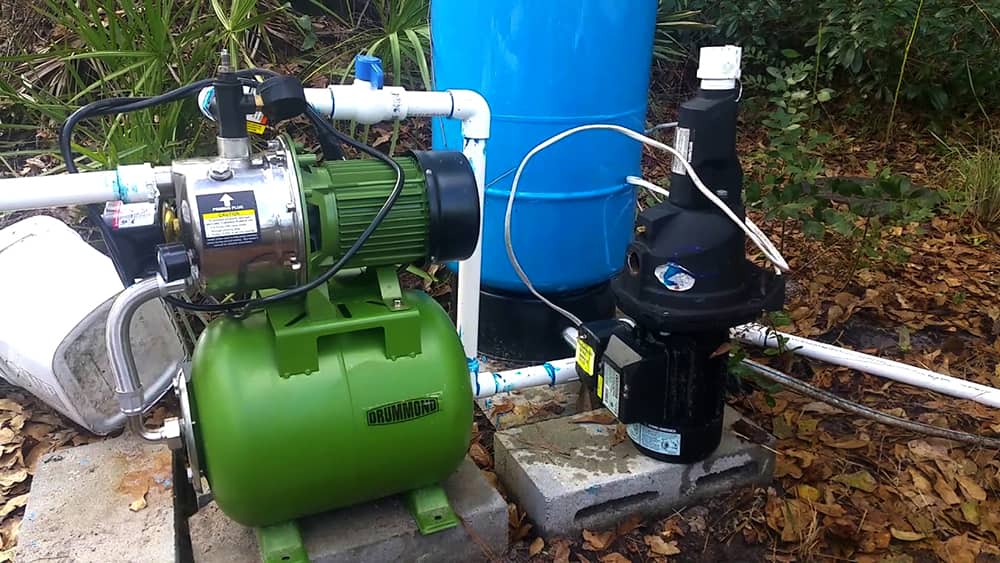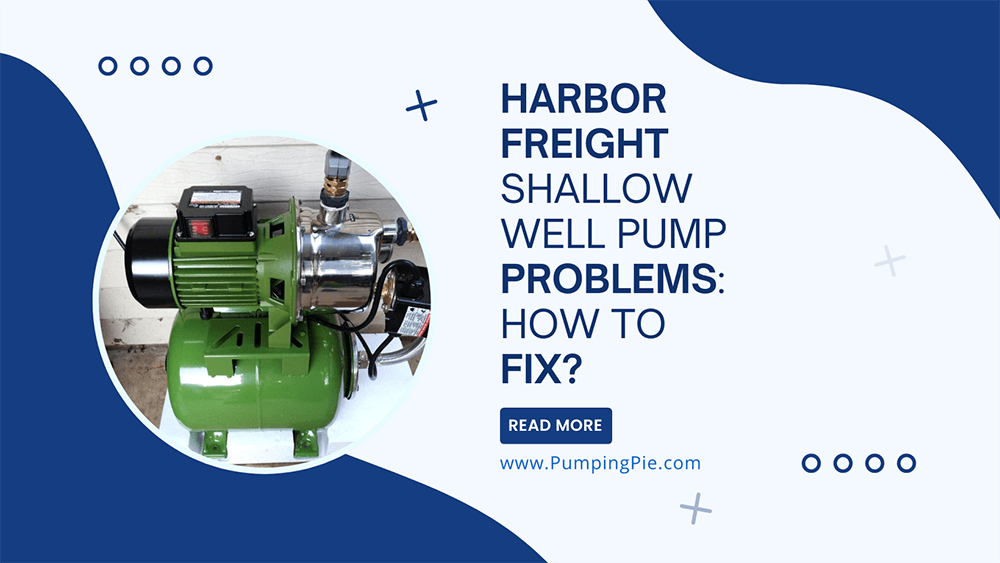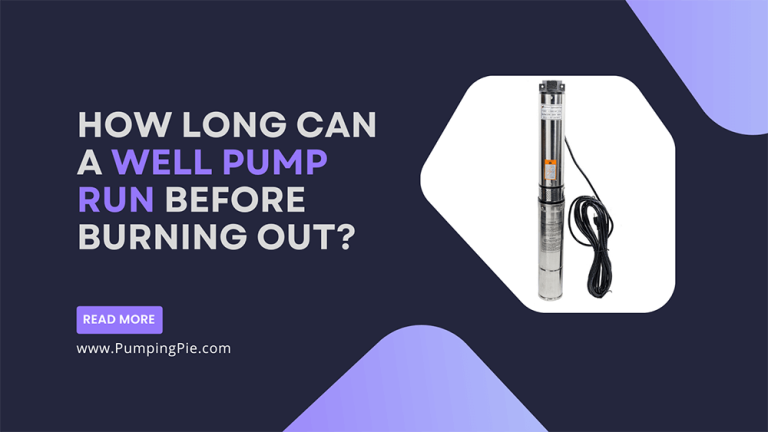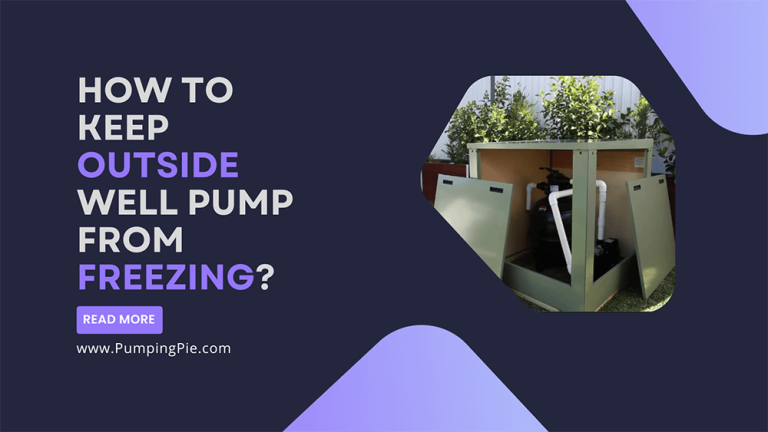Harbor Freight Shallow Well Pump Problems: How to Fix?
Sooner or later, your shallow well pump is bound to present you with some defects, even if it’s from a renowned brand like Harbor Freight.
The most common Harbor Freight Shallow well pump problems include pulsing water, murky or smelly water, or sometimes, no water at all! Inflated utility bills are also a matter of grave concern.
Troubleshooting shallow well pumps can be challenging, but it’s not rocket science! In this article, we’ve covered everything on Harbor Freight well pump, from diagnosing the problems to quick and easy fixes. Continue reading so you don’t miss out on any detail!
Contents
- 1 Harbor Freight Shallow Well Pump Problems
- 2 Preventions to Avoid Harbor Freight Shallow Well Pump Problems
- 3 FAQs
- 4 In Conclusion
Harbor Freight Shallow Well Pump Problems

A standard Harbor Freight Well Pump guarantees you about 3 months (90 days) of service, but you may inevitably run into some problems. Defects within the well pump are difficult to identify and even more difficult to fix. Moreover, repairs may drain your bank account!
Here are some typical Harbor Freight pump problems:
| Common Problems | Possible Solution |
| No water | Lower the pump |
| Pulsating water | Adjust air pressure inside the tank |
| Muddy water | Install centrifugal sand separator |
| Low water pressure | Fix pressure switch |
The most common Harbor Freight pump problems, how to recognize their symptoms, and easy troubleshooting are discussed below in detail:
● No Water
If you live in a dry or prominent drought area, you’ll frequently face the nuisance of having no running water. Another common reason is a tripped circuit breaker. A faulty pressure switch may also obstruct the water flow.
Troubleshooting
- If the circuit breaker has tripped, simply flip it back on again.
- Check whether the water table in your area has sunken. If so, install additional pipes to lower the pump deeper into the well.
● Pulsating Water
When the faucet is turned on, but water comes out in sputters or irregular pangs, it indicates that air has gotten inside the pump system. A malfunctioning pump or leaks in the pipes results in pulsating water.
Troubleshooting
- Shut off the power.
- Check the air pressure within the water tank.
- See if there are any leaks in the air chamber. You may need to change the valve if any damage is found.
- If the water is still pulsating, change the faucet.
You may need to call an expert or a professional for assistance if all the mentioned methods fail.
● Muddy Water
The pump starts pulling shallow and murky water when the water table sinks in the area. Due to large amounts of sediments and alluvium, the water becomes muddy and dirty.
Another reason for impure water is a dying pump, as it can’t filter out the impurities properly.
Troubleshooting
- As this problem doesn’t have a quick and easy fix, we highly recommend you get professional help.
- Installing a centrifugal sand separator will help to filter the water before it enters the pump system.
- A filter screen is an excellent alternative to centrifugal sand separators. The screen effectively filters the sediment out. However, they have a risk of decreasing the pressure.
After the troubleshooting, try to boil your water for the first 1-2 weeks just to be safe, so you don’t end up with any infections or diseases.
● Odorous Water
Eroded pipes can alter the smell and taste of the supplied water. Infestation of microbes or pests inside the water tank can also make the water smelly and distasteful.
However, drains filled with organic decays are the most common reason for fetid water.
Troubleshooting
- Check for algae or fungus growth inside the tank. Clean the tank thoroughly.
- If your pipes are heavily corroded, you must replace them with new ones.
- Pour a mix of bleaching powder and hot water into your drain to get rid of the accumulated organic debris.
- Consider installing an activated carbon filter or an automated chlorinator, which are highly effective disinfectants.
● Inconsistent Water Pressure
Irregular or inconsistent pressure when the tap is turned on indicates that the well is drying up. Leaks or damage in the suction pipes can also lower the pressure.
Heavily clogged pipes, as well as a dying pump, may result in low water pressure.
Troubleshooting
- Adjust the pressure switch properly. If there are defects with the switch, replace it.
- Fix any leaks or damage in the pipes. Clean the pipes rigorously so that water flow is smooth and uninterrupted.
- Consider adding a pressure checker to the system to monitor the pressure level.
● Pump Failure
Most pump failures occur due to overworking. However, it’s natural for pumps to burn out frequently at the end of their lifespan.
Troubleshooting,
Unfortunately, the only way to deal with a dying well pump is to replace it.
● Constantly Running Pump
The pump constantly runs when the pressure switch is not adjusted properly. The pump overworks when the cut-off pressure level exceeds the pump’s capacity.
Troubleshooting
- Fix the pressure switch accurately. Repair defects with the switch or replace with a new one if needed.
- Adjust the cut-off level for your pump according to its capacity.
- If you can’t identify the cause of the problem, don’t hesitate to call in a plumber.
● Waterlogged Tank
When there’s too much water compared to the volume of air inside, the tank gets waterlogged. A Waterlogged tank causes the pump to fluctuate and run non-stop cycles.
Troubleshooting
- Turn off the power and drain your tank.
- Examine the air chamber settings. Readjust the readings accordingly.
- Turn on the power and run the pump to ensure it’s running properly.
Even after fixing the air chamber settings, the pump may still fluctuate repeatedly. In that case, you need to change the water tank.
● High Utility bills
One or more of the malfunctions listed above can cause your utility bills to soar.
Pumps require a substantial amount of energy to function efficiently. Leaky pipe system, overworking pump, low water pressure, heavy sedimented water, etc., add more to power consumption resulting in skyrocketing bills.
Troubleshooting
The only fix for high utility bills is to identify the root of the problem and fix it immediately. Consult with an expert to figure out the solution.
Preventions to Avoid Harbor Freight Shallow Well Pump Problems
Prevention is always better than cure. You need to be careful with your pump and water usage from the beginning if you want to avoid the hassle of unexpected troubles and expensive repairs.
You can keep your well pump in better shape by:
- Monitoring the pump, tank as well as pipes regularly for any damage or leaks
- Cleaning the pipes and tanks once in a while to avoid dirt accumulation.
- Avoid overusing the pump or wasting water
- Adjust the pressure level of the tank appropriately
- Don’t run the pump nonstop. Give it a few minutes of the interval before starting the next cycle
- Maintain the air pressure inside the tank according to your water usage
If you follow these instructions, your well pump is sure to last longer and cause you fewer troubles. You can also save yourself from high repair costs.
However, these precautions don’t guarantee that your well pump will last forever; it’s natural to run into problems along the way.
FAQs
How long does a Harbor Freight shallow well pump last?
Most Harbor Freight Shallow Well Pumps come with a shelf life of 15-20 years, but the lifespan varies depending on its workload.
What to do when the pump has power but is not running?
When the pump doesn’t run despite having power, it indicates a significant electrical or mechanical malfunction.
Consult a professional as it’s a complicated and dangerous problem to fix on your own.
How to unfreeze a shallow well pump?
If your pump is frozen, simply thaw out the frosted portions. You can pour hot water into the frosted pipes or use a blow dryer.
In Conclusion
Harbor Freight is a reliable brand, and its shallow well pumps are highly efficient. But despite that, they’re bound to be damaged and produce issues.
Shallow well pump problems aren’t specific only to Harbor Freight pumps. In fact, well pumps of almost all brands run into similar issues. The important thing here is to keep a cool head and identify the problems to fix them.
We hope this article has given insight into what Harbor Freight shallow well pump problems look like and how to fix them effectively. Now you can solve any trouble your pump throws at you without worrying. Good luck!
As an Amazon Associate, I earn from qualifying purchases.







![Can You Burn Out A Well Pump [Reasons & Quick Solutions]](https://pumpingpies.com/wp-content/uploads/2022/08/Can-You-Burn-Out-A-Well-Pump-Reasons-Quick-Solutions-768x432.png)